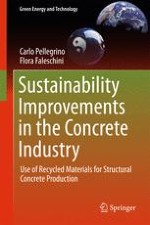This book examines state-of-the-art techniques for using recycled materials for structural concrete production, and explores the use of concrete with metallurgical slag, rheology of fresh recycled concrete, and life-cycle analysis of building materials. It reviews recent codes, guidelines and practices for using recycled materials in structural concrete application, and presents research recently carried out by the authors.
Focusing on techniques that limit the environmental impacts of the concrete industry, the text explores the use of recycled components in the place of virgin aggregates and ordinary binders. Chapters focus on topics including processing procedures, mixture proportioning, mechanical properties, durability and structural applications. Providing a valuable resource to engineering postgraduates and researchers, this book is also intended for civil engineers, geologists, and concrete engineers.
